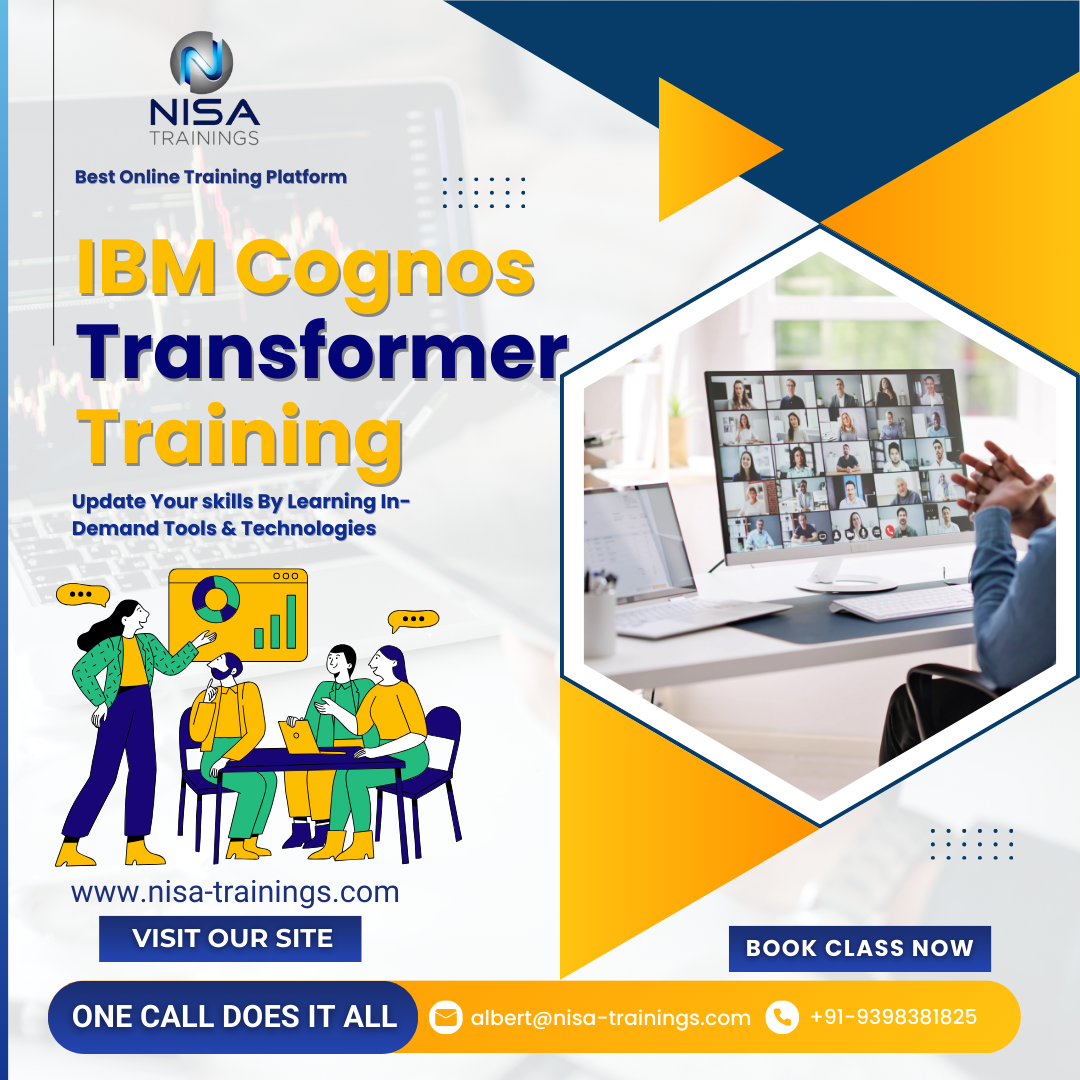IBM Cognos Transformer

Why should you choose Nisa For IBM Cognos Transformer Training?
Nisa Trainings is the best online training platform for conducting one-on-one interactive live sessions with a 1:1 student-teacher ratio. You can gain hands-on experience by working on near-real-time projects under the guidance of our experienced faculty. We support you even after the completion of the course and happy to clarify your doubts anytime. Our teaching style at Nisa Trainings is entirely hands-on. You’ll have access to our desktop screen and will be actively conducting hands-on labs on your desktop.
Job Assistance
If you face any problem while working on IBM Cognos Transformer Course, then Nisa Trainings is simply a Call/Text/Email away to assist you. We offer Online Job Support for professionals to assist them and to solve their problems in real-time.
The Process we follow for our Online Job Support Service:
- We receive your inquiry for Online Job
- We will arrange a telephone call with our consultant to grasp your complete requirement and the tools you’re
- If our consultant is 100% confident in taking up your requirement and when you are also comfortable with our consultant, we will only agree to provide service. And then you have to make the payment to get the service from
- We will fix the timing for Online Job Support as mutually agreed by you and our consultant.
Course Information
IBM Cognos Transformer Training
Duration: 25 Hours
Timings: Weekdays (1-2 Hours per day) [OR] Weekends (2-3 Hours per day)
Training Method: Instructor Led Online One-on-One Live Interactive
Sessions.
COURSE CONTENT :
1. Introduction to IBM Cognos Transformer
- Overview of IBM Cognos suite and business intelligence concepts.
- Introduction to OLAP (Online Analytical Processing) and its importance.
- Understanding the role of Cognos Transformer in the BI ecosystem.
- Key features of Cognos Transformer.
- The difference between relational and multidimensional models.
2. Getting Started with Cognos Transformer
- Installing and configuring IBM Cognos Transformer.
- Understanding the Transformer workspace and user interface.
- Overview of the data sources available (relational databases, data warehouses, etc.).
- Creating a new project in Cognos Transformer.
- Importing data sources and defining data connections.
3. Data Modeling Concepts
- Understanding dimensions, measures, and hierarchies.
- Defining dimensions: time, geography, products, etc.
- Hierarchy creation and its impact on cube design.
- Measures and calculations: defining aggregations and metrics.
- Working with fact tables and dimension tables.
4. Building OLAP Cubes in Cognos Transformer
- Step-by-step guide to building an OLAP cube.
- Adding dimensions and measures to the cube.
- Defining custom calculations and metrics.
- Structuring the cube: dimensions, levels, and hierarchies.
- Managing the grain of data in the cube.
- Handling large data sets and optimizing cube size.
5. Enhancing Cube Design
- Creating custom calculations and formulas.
- Using conditional formatting and custom groupings.
- Managing multi-currency data (if applicable).
- Handling null values and missing data.
- Advanced cube design techniques (e.g., aggregations and custom metrics).
6. Cube Processing and Optimization
- Running and refreshing cube processing.
- Optimizing cube performance for faster query times.
- Managing cube storage and data partitioning.
- Incremental refresh vs. full refresh of cubes.
- Understanding and managing data in the cube cache.
7. Using Cognos Transformer with Other Cognos Tools
- Introduction to IBM Cognos Query Studio for querying OLAP cubes.
- Using Cognos Report Studio to create reports based on OLAP cubes.
- Leveraging Cognos Workspace for interactive data exploration.
- Integration with Cognos Analytics (if applicable).
8. Advanced Cube Management
- Managing large or complex cubes with multiple fact tables.
- Version control and managing different versions of cubes.
- Sharing cubes between different environments (e.g., development, test, production).
- Troubleshooting common cube issues.
- Handling security in Cognos Transformer (setting permissions for users).
9. Best Practices for Cube Design and Maintenance
- Design best practices for efficient and scalable cubes.
- Managing data model changes and cube updates.
- Documentation and maintaining metadata for future reference.
- Ensuring data accuracy and consistency in the cube.
- Performance tuning and optimization tips.
10. Troubleshooting and Error Handling
- Common errors during cube creation and processing.
- Diagnosing and resolving performance issues.
- Dealing with data refresh problems.
- Using logs and debugging techniques for error resolution.
